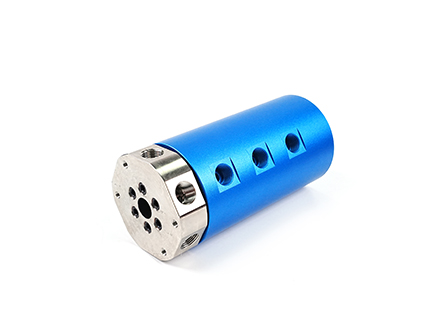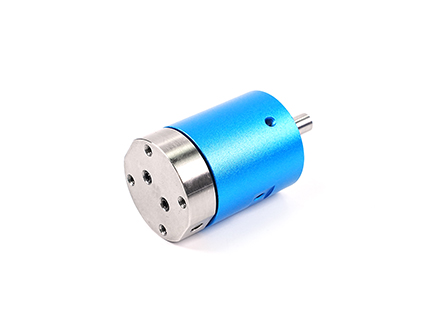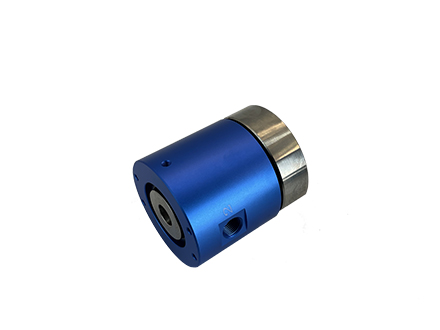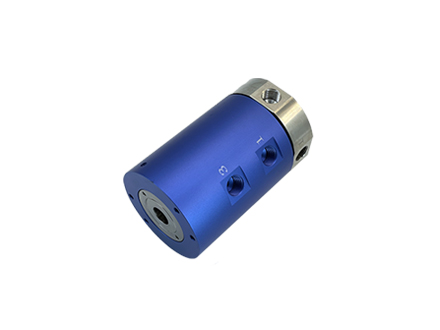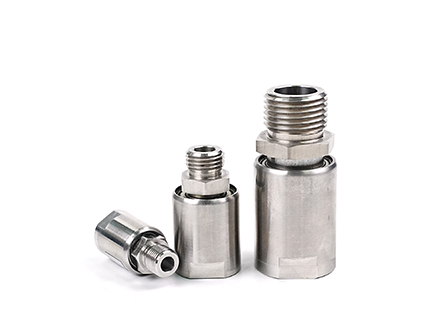 A Anillo de deslizamiento giratorioLa unión rotativa eléctrica, también conocida como unión rotativa eléctrica o conector rotativo, es un componente eléctrico crucial diseñado para proporcionar potencia continua y transmisión de señal entre partes rotativas y estacionarias del equipo. Normalmente instalado en el centro de la maquinaria giratoria, consta de dos componentes principales:
A Anillo de deslizamiento giratorioLa unión rotativa eléctrica, también conocida como unión rotativa eléctrica o conector rotativo, es un componente eléctrico crucial diseñado para proporcionar potencia continua y transmisión de señal entre partes rotativas y estacionarias del equipo. Normalmente instalado en el centro de la maquinaria giratoria, consta de dos componentes principales:
El rotor, que está conectado a la estructura giratoria y se mueve con ella.
El estator, que está unido a la estructura fija y suministra energía o datos.
A través del mecanismo de anillo deslizante, se realiza una transmisión precisa de potencia, señal de datos, imagen e incluso potencia entre dos entidades relativamente giratorias.
Características clave de Anillos de deslizamiento rotativos
Rotación ilimitada de 360 grados: El Anillo de deslizamiento giratorio soporta la rotación continua más allá de 360 grados, proporcionando una transmisión fiable de energía y señal para varios equipos rotativos.
Transmisión de alta precisión: Fabricada utilizando técnicas de precisión avanzadas y materiales de alta calidad, garantiza durabilidad y rendimiento estable durante rotaciones de alta velocidad, manteniendo datos precisos y transferencia de potencia.
Integración multifuncional: Estos anillos deslizantes pueden integrar la transmisión de energía, datos, señal e imagen en una única unidad, satisfaciendo las necesidades de maquinaria compleja.
Larga vida útil: Con materiales resistentes al desgaste y diseño optimizado, los anillos de deslizamiento rotativos están construidos para un funcionamiento estable y duradero en condiciones desafiantes.
Estructura compacta: El diseño compacto minimiza el uso de espacio, haciendo que la instalación y el mantenimiento sean más sencillos.
Parámetros del producto
Trabajo y vida | Consulte la tabla de selección del grado del producto | Voltaje nominal | 0-440VACNDC |
Velocidad nominal | Consulte la tabla de selección del grado del producto | Resistencia de aislamiento | <500mq> |
Temperatura de trabajo | -30 ° C ~ 80 ° C | Especificaciones de los cables eléctricos | Awg17 ¿ awg22 ¿ Teflon plateado |
Humedad de trabajo | 0 ~ 85% RXH | Longitud del cable | Longitud estándar 250 mm |
Material de contacto | Consulte la tabla de selección del grado del producto | Resistencia de aislamiento | 500VAC@50XHz El 6S |
Material de la carcasa | aleación de aluminio | Valor de cambio de resistencia dinámica | <0.010<> |
Rotation torque | 0.05N.m+0.02N.m/6Flow passage | Protection level | IP51 |
Functions of Anillos de deslizamiento rotativos
Power Transmission: Rotary slip rings deliver stable electrical power to rotating devices, ensuring uninterrupted operation throughout their movement.
Signal Transmission: They enable the transmission of data, communication signals, and images, making them essential for control and monitoring systems.
Power and Signal Integration: In certain specialized applications, Anillo de deslizamiento giratorios also facilitate the transmission of power (e.g., hydraulic or pneumatic power), in addition to electrical signals.
Applications of Anillos de deslizamiento rotativos
Industrial Machinery: In applications such as industrial robots and CNC machines, Anillo de deslizamiento giratorios transmit power and data signals, ensuring precise control and stable operations.
Aerospace: Rotary slip rings are used in rotating components of aerospace systems, such as radar antennas and gyroscopes, facilitating continuous power and signal flow.
Surveillance and Security: For security camera systems, especially those with pan-tilt-zoom (PTZ) capabilities, Anillo de deslizamiento giratorios provide stable transmission of video signals and power.
Medical Devices: In medical equipment like CT scanners and MRI machines, Anillo de deslizamiento giratorios ensure the continuous transfer of images and data, essential for accurate diagnostics.
Military Equipment: Used in military radar, communication systems, and other equipment, Anillo de deslizamiento giratorios play a critical role in signal and power transmission for mission-critical operations.
Maintenance and Care
Regular Inspections: Conduct regular checks on the slip ring, including visual inspections, wiring integrity, and insulation resistance, to ensure optimal performance.
Cleaning: Keep the slip ring surface free from dust and dirt using a clean cloth or brush, preventing interference with conductivity and rotation.
Lubrication: Apply a suitable lubricant to the rotating components to reduce friction and wear, extending the lifespan of the slip ring.
Avoid Overload: Ensure the slip ring operates within its rated current and voltage specifications to prevent overheating and damage.
Proper Installation: Follow installation instructions closely to avoid miswiring or improper fitting, which could cause malfunction or failure.
Important Considerations
Operating Environment: Rotary slip rings should be used in dry, dust-free, and non-corrosive environments to protect the internal components.
Temperature Range: Ensure the slip ring operates within the specified temperature range to avoid performance degradation or failure.
Water and Dust Protection: For applications requiring waterproofing or dustproofing, choose slip rings with appropriate protection ratings to maintain functionality in challenging environments.
Electromagnetic Compatibility (EMC): Pay attention to electromagnetic interference (EMI) issues when integrating Anillo de deslizamiento giratorios with other electronic systems to prevent signal disruption.
Storage Conditions: If storing a Anillo de deslizamiento giratorio for an extended period, keep it in a dry, ventilated space free from corrosive gases to prevent moisture or corrosion damage.
Conclusion
Anillos de deslizamiento rotativos, also known as electrical rotary unions or rotary connectors, are vital components for industries requiring seamless power and signal transmission between rotating and stationary parts. By maintaining regular checks and following operational and environmental guidelines, these devices ensure high-performance and longevity, making them indisp






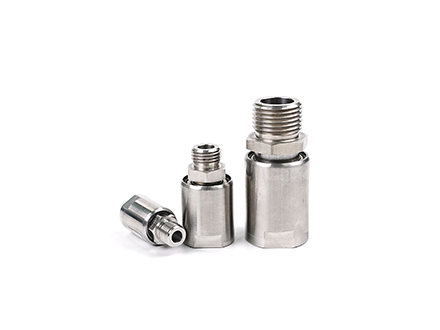
 A
A 